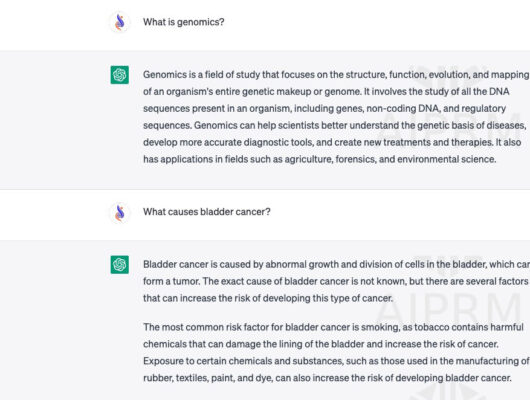As a life science company, creating great content should be a top priority for your marketing efforts. Content marketing allows you to build trust and relationships with potential customers, establish your brand as a thought leader, and drive more customer adoption and revenue. But effective content marketing for life sciences requires a strategic and operational approach tailored to your target customers educational journey.
In this ultimate guide, we’ll cover everything you need to know about life science content marketing—from understanding your audience to creating different content formats and measuring success.
Why Life Science Companies Need Content Marketing
There are several key benefits that make content marketing a powerful strategy for the life science sector:
- Brand Discovery and Authenticity: By creating high-quality, educational content, you increase brand awareness and visibility for your life science company. This helps get your name in front of your target audience.
- Building Trust In Your Brand: The life sciences industry is innovative and launches novel products and complex science in a highly regulated environment. Sharing your scientific expertise through content helps build trust that your brand is a credible, authentic and top quality.
- Relationship Building With Your Customers : Great content keeps your audience engaged and coming back for more of your latest insights. This nurtures a healthy and genuine partnership with your customers.
- Set Yourself Apart From Competitors: In the competitive life science landscape, a strong content strategy differentiates your brand and unique expertise. Embarking on the content marketing journey resembles keeping a journal. It enables you to articulate your thoughts and gain insights into what distinguishes your company from others.
- Generate Sales: While not promotional, educational content guides potential customers through the sales funnel by addressing their pain points and helps support them to make the best decision based on their needs.
Related: How to Build a Winning Biotech Content Marketing Strategy
Recognizing the Right Time To Start Your Life Science Content Marketing
Timing is crucial in launching your life science content marketing strategy. Securing leadership buy-in and budget allocation to disseminate content across diverse channels effectively is essential.
Here’s an overview of inflection points that typically lead to the launch of a life science content marketing initiative.
Growth Stage
- Looking for additional VC funding
- Approaching clinical trials
- Pre-launch phase
- Post-launch phase
Internal Landscape
- Siloed marketing efforts
- Lack of content marketing expertise
- Increasing need for customer outreach
Competitive Landscape
- Your competitors have built comprehensive Resource and Educational Centers
Understanding Your Life Science Audience
Before developing any content marketing strategy, you need to understand who you’re creating content for. Life science audiences span business leaders, investors, researchers, healthcare professionals, patients, and more. Each segment has different needs, priorities, and content preferences that must be carefully considered. Furthermore, it’s essential to adopt a comprehensive strategy and grasp the key decision makers within each target audience, typically comprising 2-3 individuals involved in the purchasing process. Tailor your content to resonate with all of these stakeholders.
Business leaders and investors
This customer type prioritizes market analysis, financial projections, regulatory pathways, and commercialization strategies over the scientific details. They need to assess market opportunities, competitive landscapes, and potential returns on investment. Therefore, high level thought leadership content is best to attract, inform and delight this audience.
Life science researchers
This customer type is most interested in highly technical white papers, peer-reviewed publications, and detailed case study reports outlining your latest scientific findings, methodologies, and data with existing customers. They want to understand the core science and evaluate the rigor behind any claims. In this scenario, the usual stakeholders engaged in the purchasing process include the end-user, focused on accomplishing tasks efficiently, a director-level employee seeking the optimal vendor to meet specific criteria (such as scalability, security, and quality compliance), and Procurement, tasked with ensuring adherence to pricing and legal stipulations.

Healthcare professionals
This customer type benefits more from case studies, patient success stories, risks and access that are involved and how to empower them to speak carefully and directly to their patients, and educational materials that demonstrate how your products or services can improve patient outcomes and ease disease burden in a real-world clinical setting. Those participating in the purchasing decision include payors, patients, and caregivers, all striving to identify the most effective therapy to achieve their goals.
Patients or patient caregivers
This customer type will likely respond best to content that explains complex topics in an interactive way and using easy-to-understand language, focusing on the tangible benefits and personal impact your solutions can have on their health and quality of life. It’s crucial to tackle particular inquiries about patient access and post-treatment concerns. This empowers patients and their caregivers to engage in meaningful discussions with healthcare providers, aiding in the discovery of optimal treatment solutions tailored to their requirements.
Sales team
Your Sales team is also a vital audience to consider. Educating them is essential since they serve as your primary advocates on the front lines. Ensuring they can represent your company and product in the best possible light is paramount. Gaining insight into their experiences, journey, personality, and other aspects allows you to understand them as individuals and thus develop content that will connect and resonate.
By taking the time upfront to thoroughly define and segment your audiences, you can craft a tailored content marketing strategy that speaks directly to their unique needs, interests, and motivations. This personalized approach ensures your message genuinely resonates instead of getting lost in the noise.
Leverage existing internal data on customer types, research on LinkedIN, tools like audience personas, surveys, social media listening, and website analytics to build a comprehensive picture of who you’re trying to reach. Don’t make assumptions—the more specific insights you can gather, the better you can map different content types and delivery channels to each segment. It’s crucial to comprehend not only customers’ actions and job specifications but also their characteristics and preferences. Inquire about their preferred learning methods, engage with them at their level, and foster mutual learning opportunities.
Related: Communication Adaptation Strategies for Life Sciences
Creating a Content Strategy and Plan
In the life sciences, a one-size-fits-all content marketing strategy simply won’t be as effective. By deeply understanding your audiences first, you can develop a focused, high-impact content marketing program that builds trust, credibility, and differentiation for your brand. What’s intriguing about crafting a content strategy is the process of streamlining and refining your message through peeling away and unveiling the company’s authenticity.
Partnering with the internal team
Co-creating content with internal team members ensures that diverse perspectives and expertise are incorporated, resulting in richer and more impactful materials. This collaborative approach not only enhances the quality of the content but also fosters a sense of ownership and commitment among team members. By pooling together resources, knowledge, and creativity, you can create content that truly resonates with your audience and effectively communicates your message.

Create a full-funnel content plan
Develop a mix of top-funnel content to build brand awareness, mid-funnel content to nurture leads, and bottom-funnel content to drive conversions. Align your content with the different stages of the buyer’s journey.
By implementing a comprehensive content strategy encompassing top-level awareness content, middle-level consideration content, and bottom-level decision-making content, you can engage with your audience at every stage of their journey, guiding them towards conversion while establishing your brand as a trusted authority in your industry.
Leveraging SEO best practices, such as keyword optimization and link building, is essential for ensuring that your content maintains online visibility and steadily climbs search engine rankings over time.
There are a variety of formats based on your content goals.
- Blog Posts: Regular blog content is a cornerstone of content marketing, allowing you to share industry news, insights, and thought leadership.
- Case Studies: Real-world examples of how your life science solutions create value and impact.
- Podcasts: Audio shows are a great way to have in-depth conversations with thought leaders in an easy-to-consume format.
- Social Media Posts: Platforms like LinkedIn allow you to share bite-sized content and engage directly with your audience.
- Videos: From animated explainers to expert interviews, video is a powerful medium for science communication.
- Webinars: Host live or pre-recorded sessions diving deep into relevant life science topics.
- White Papers: Comprehensive guides and reports that establish your scientific expertise.
The possibilities are endless when it comes to content formats. The key is choosing the right mix based on your audience’s preferences and mapping it to your life science marketing goals.
Related: 6 Content Creation Tips To Create High Performing Life Sciences Content
Set-Up User Centric and Pragmatic Content Operating System
It’s essential to implement a consistent content creation and distribution process. Use tools like Monday.com to streamline your workflow and keep your content engine running smoothly.
For some general tips:
- Always prioritize scientific accuracy in any claims or data you present. Your credibility is on the line. Collaborate with subject matter experts, whether internal scientists or external thought leaders, to add credibility and ensure your content is factual and up to date.
- Focus on storytelling by humanizing complex topics and tying them back to real-world applications that resonate with your audience. Use case studies, examples, and analogies to make scientific concepts more relatable and engaging.
- Take a risk-based approach to content review. Streamlining and standardizing workflows through automation. We have a workflow guide here to help operationalize the content development process while ensuring it’s accurate, useful and relevant.
- Implementing a risk-based approval framework.Developing a structured approach to approval that prioritizes risk assessment.
- Establishing a central repository for accurate information. This will allow a center of truth that everyone in the company can reference.
- Avoid overly promotional language. The goal is to educate, not advertise your products or services. Focus on providing valuable, informative content that addresses your audience’s pain points and needs.
- Repurpose successful content into new formats to extend its reach. A popular blog post could become a video, a webinar could be turned into an ebook chapter, etc. This allows you to get more mileage out of your best content.

By following these best practices and taking a strategic, audience-centric approach to content creation, you can develop content that resonates, educates, and ultimately drives results for your business. Just remember that success doesn’t happen overnight—commit to consistently creating quality content and optimizing your efforts over time.
Related: How To Build A Publication Quality Content Marketing Workflow
Amplify your content’s reach by distributing it through multiple channels
Enhance the reach of your content by dispersing it across various channels. Utilize email marketing, social media platforms, and your sales team to ensure maximum exposure to relevant audiences. Additionally, motivate internal subject matter experts and thought leaders to share the content within their networks.
Transitioning from traditional mass campaigns to personalized medicine underscores the need to capitalize on data effectively. Rather than allowing data to stagnate, it should continuously generate interest and serve as a valuable resource. However, this requires agility and speed in data management processes.
Costly campaigns solely aimed at data generation highlight the importance of building habits for data preservation. By breaking down silos and ensuring creative assets are readily accessible, organizations can maximize the utility of their data resources and drive strategic decision-making.
Measuring Life Science Content Marketing Success
It is essential to measure the performance of your life science content marketing. The metrics you prioritize depend on your overall content goals. Is it brand awareness? Lead nurturing? Driving sales conversations? Define your objectives, then monitor the data that ties back.

Furthermore, observing customer behavior often provides more insightful information than relying solely on feedback from sales personnel. Integrating these two perspectives is essential for gaining a comprehensive understanding of your audience.
Some key metrics to track include:
- Website traffic
- Lead generation
- Social media engagement
- Email subscriptions
- Content downloads
- Sales funnel progression
Content marketing offers immense potential for life science companies willing to make the investment. By understanding your audience, creating great content, and continuously optimizing your strategy, you can reap the benefits of increased brand recognition, more leads in your sales funnel, and a better ROI on your marketing spend.
Related: Building an Effective Content Dashboard: Measuring Your Marketing Metrics’ KPIs
Examples Of Life Science Content Marketing Done Right
To inspire your own content marketing efforts, let’s look at a few companies doing it well:
Benchling has built an extensive content library full of valuable resources to educate and engage life science professionals on using their digital lab tools and cloud platform. Their blog covers timely topics and emerging trends with in-depth articles from subject matter experts. They also host frequent webinars on key areas like FAIR data management, AI/ML applications, and digital transformation strategies.
By providing this wealth of free, high-quality content, Benchling positions itself as a thought leader in the R&D cloud space. Their content demonstrates deep domain expertise while also being accessible to scientists at any level. It helps nurture prospects through the marketing funnel by addressing common pain points and showing how Benchling’s solutions can streamline workflows.
Argenx took a unique content approach when launching their first commercial product, Vyvgart, for the rare disease generalized myasthenia gravis. They created “A Mystery to Me,” the first documentary series about living with myasthenia gravis, featuring real patient stories. This powerful, empathetic content helped raise awareness of the disease while humanizing Argenx’s brand.
The docuseries garnered over 100,000 downloads and won numerous awards, like a Cannes Lion. It exemplified Argenx’s commitment to deeply understanding and advocating for the MG community. This type of content marketing builds long-term brand loyalty and trust.
While very different approaches, they all create compelling content that engages their specific audience and broader life science community.
Kite Therapeutics stands out for its exceptional patient website dedicated to Tecartus, their novel cell therapy treatment. The website is designed for user-friendliness, ensuring patients can easily navigate through the wealth of information it offers. Whether you’re seeking details about cell therapy in general, Tecartus specifically, exploring patient resources, or understanding the financial aspects and access of treatment, the website provides a comprehensive and informative experience with text and videos alike.
Ready to take your life science content marketing to new heights?
Sciencia Consulting can help you develop a comprehensive, impactful content strategy tailored to your unique expertise and target audiences.
Our team of experienced life science marketers and subject matter experts will work closely with you to understand your business goals, competitive landscape, and customer needs. From there, we’ll craft a custom content plan designed to showcase your thought leadership, engage your key stakeholders, and drive measurable results.
Whether you need support with scientific writing, content ideation, distribution strategy, or performance analytics, we have the knowledge and skills to elevate your content marketing efforts. We’ll help you create actionable content that sets your brand apart and positions you as a trusted partner in the life sciences.
Don’t let your expertise go unnoticed in today’s crowded digital landscape. Contact us today to learn more about our services and how we can help you achieve your digital marketing goals.








